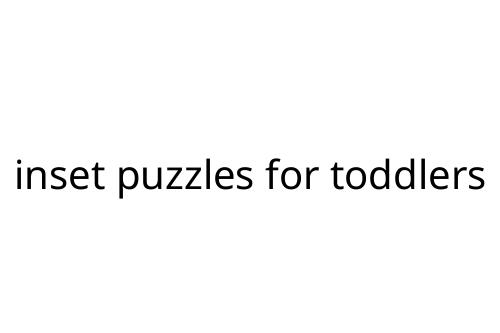inset puzzles for toddlers
Inset puzzles for toddlers are a classic choice for early learning. These simple, sturdy puzzles are designed specifically for little hands, usually featuring easy-to-grip pieces that fit into corresponding slots or cut-outs on a solid board. If you’re considering educational activities for your toddler, inset puzzles deserve a closer look.
What Are Inset Puzzles?
Inset puzzles consist of a wooden or plastic board with cut-out shapes, each paired with a matching piece. The shape and size are carefully crafted for easy placement by toddlers. Many designs include knobs or pegs to help with grasping, accommodating developing fine motor skills.
Unlike complex jigsaw puzzles, inset puzzles usually have a small number of large, singular pieces. Themes can include animals, numbers, vehicles, or daily objects. Some even make sounds or include textured elements for sensory play.
Benefits for Toddlers
One of the main strengths of inset puzzles for toddlers is promoting hand-eye coordination. As kids pick up pieces and maneuver them into place, they’re building basic spatial awareness.
Inset puzzles also:
- Develop fine motor skills: Grasping and fitting pieces strengthens fingers and improves dexterity.
- Teach problem-solving: Matching shapes requires observation and logical thinking.
- Encourage vocabulary and language: Puzzles with pictures, numbers, or letters offer natural prompts for naming and discussion.
- Build patience and focus: Completing a puzzle, even a simple one, helps toddlers practice sustained attention.
Choosing the Right Puzzle
Not all inset puzzles are created equal. For toddlers, durability is key. Wooden puzzles tend to be chunkier and longer-lasting than thin cardboard. Also, avoid small, breakable pieces that could pose choking hazards.
Look for bold, contrasting colors and familiar themes — vehicles, animals, or shapes work well. Puzzles with easy-to-grab knobs assist those with developing coordination. If your child likes extra stimulation, seek out options that include sound buttons or multi-sensory textures.
Tips for Introducing Inset Puzzles
Start simple. Offer puzzles with fewer pieces and larger shapes to prevent frustration. Sit with your toddler the first few times and model matching pieces to spaces. Celebrate small victories to keep the activity positive.
Rotate puzzles regularly to maintain interest. Challenge growth by introducing incrementally more complex puzzles as skills develop. Don’t rush — the goal is learning through play, not speed.
Pros and Cons
Pros:
- Boosts fine motor and cognitive skills
- Engages attention in a screen-free way
- Durable (especially wood) and reusable
- Encourages independent play
Cons:
- Limited complexity for older toddlers
- Some puzzles can be pricey
- Small pieces (on cheap sets) may pose a hazard
Final Thoughts
Inset puzzles for toddlers strike a balance between fun and foundational skill-building. They’re straightforward, low-tech, and perfect for hands-on learning. With so many designs available, you’re sure to find one that appeals to your child’s interests and developmental stage. As with any toy, a little supervision goes a long way — but the benefits are clear and long-lasting.




